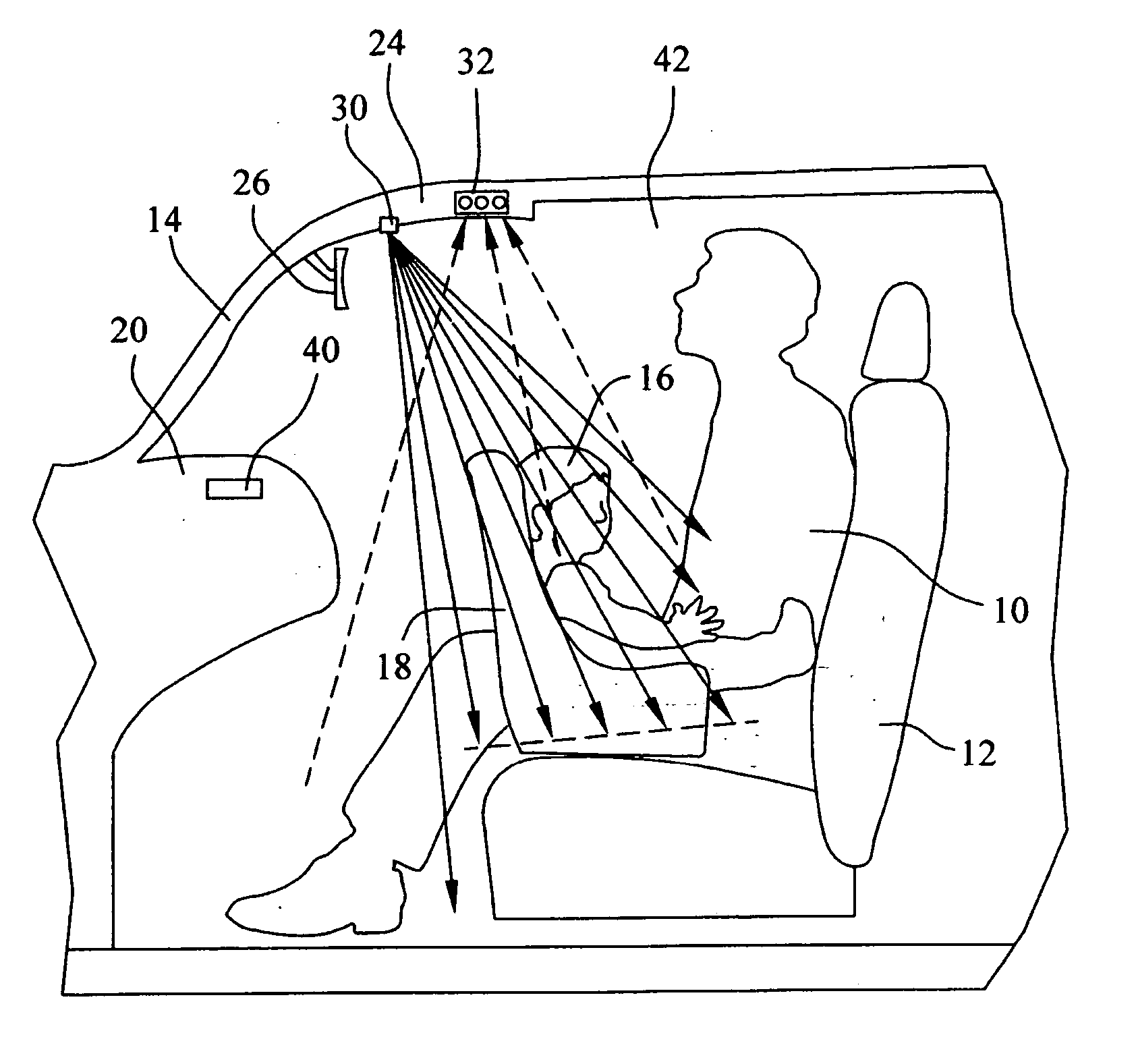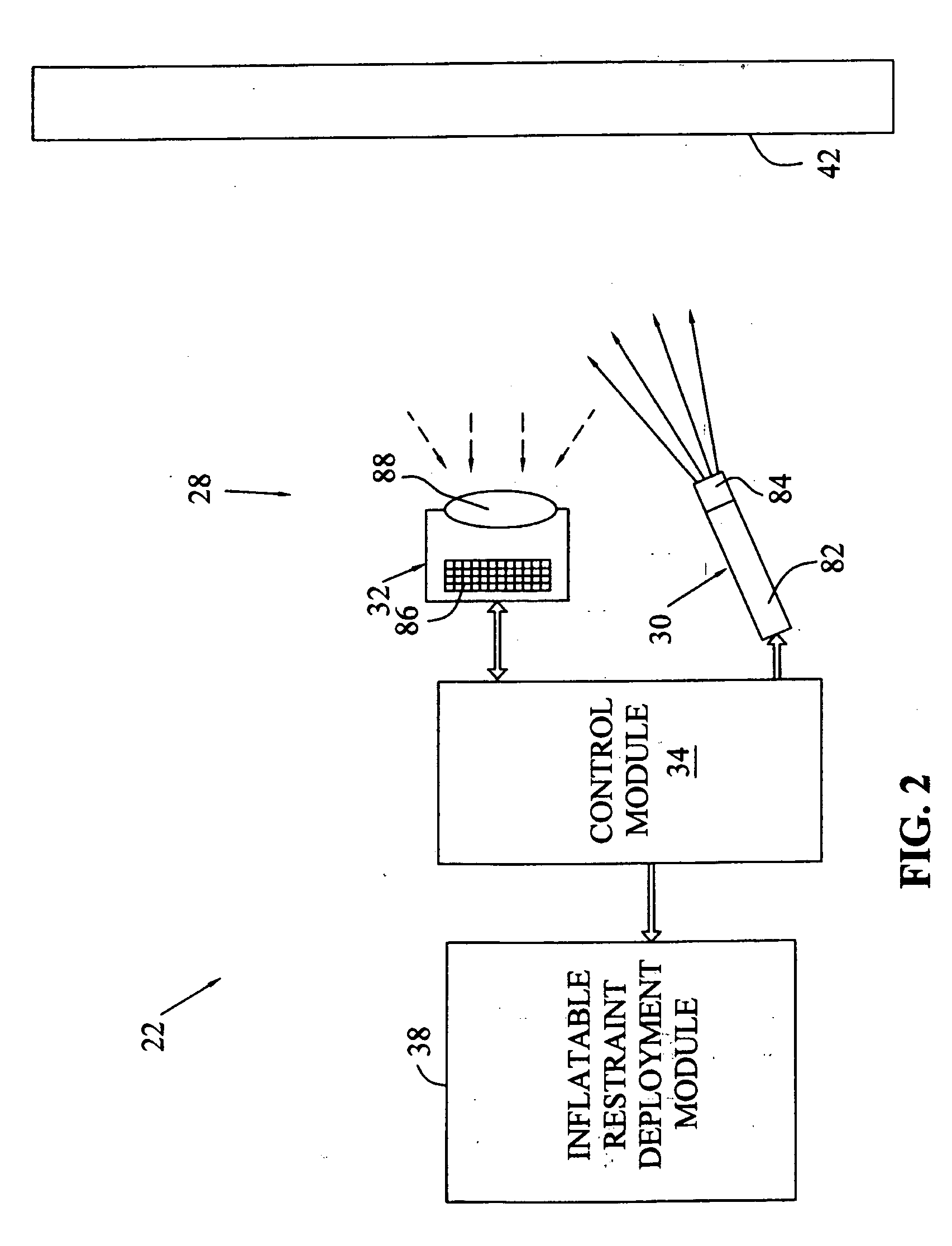Actively-illuminating optical sensing system for an automobile
an active illumination and optical sensing technology, applied in the direction of distance measurement, pedestrian/occupant safety arrangement, instruments, etc., can solve the problems of affecting the ability of an affecting the ability of the active illumination optical sensing system to accurately and reproducibly perform its functions, and affecting the detection or sensing of light originating from the emitter. , the interference of ambient light with the detection or sensing of light is reduced
- Summary
- Abstract
- Description
- Claims
- Application Information
AI Technical Summary
Benefits of technology
Problems solved by technology
Method used
Image
Examples
Embodiment Construction
[0033] Referring now to the drawings, and particularly to FIG. 1, there is shown a person 10 seated on the front-outboard seat 12 of a vehicle 14. As shown, person 10 is properly seated on seat 12, with his hips and back placed against the back of the seat, and with the seat set at a safe distance spaced from dashboard 20 of vehicle 14. Also illustrated on FIG. 1 is an alternative arrangement in which an infant 16 is seated in a rear facing infant seat 18, clearly within the at-risk zone.
[0034] Mounted in a console 24 behind a rear view mirror 26 in vehicle 14 is an optical occupant proximity sensor system 28 (FIG. 2) including an emitter module 30 and a light detector module 32. Emitter module 30 emits optical energy in the form of infrared (IR) or near infrared (NIR) radiation. Active near infrared illuminations have the advantages of being non-intrusive to the occupants and, at the same time, providing enough sensitivity for typical silicon based receivers.
[0035] Detector modul...
PUM
 Login to View More
Login to View More Abstract
Description
Claims
Application Information
 Login to View More
Login to View More - R&D
- Intellectual Property
- Life Sciences
- Materials
- Tech Scout
- Unparalleled Data Quality
- Higher Quality Content
- 60% Fewer Hallucinations
Browse by: Latest US Patents, China's latest patents, Technical Efficacy Thesaurus, Application Domain, Technology Topic, Popular Technical Reports.
© 2025 PatSnap. All rights reserved.Legal|Privacy policy|Modern Slavery Act Transparency Statement|Sitemap|About US| Contact US: help@patsnap.com



